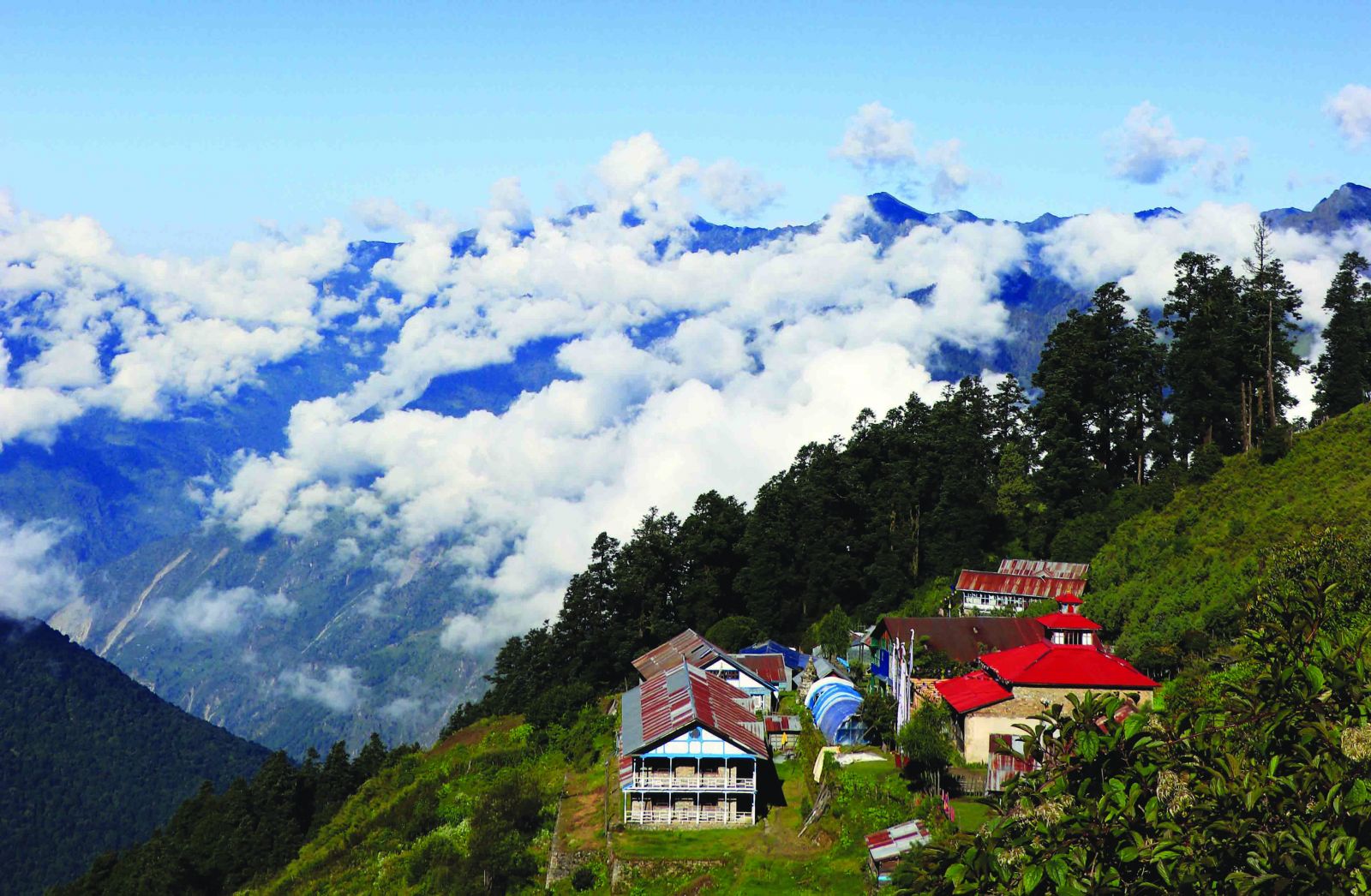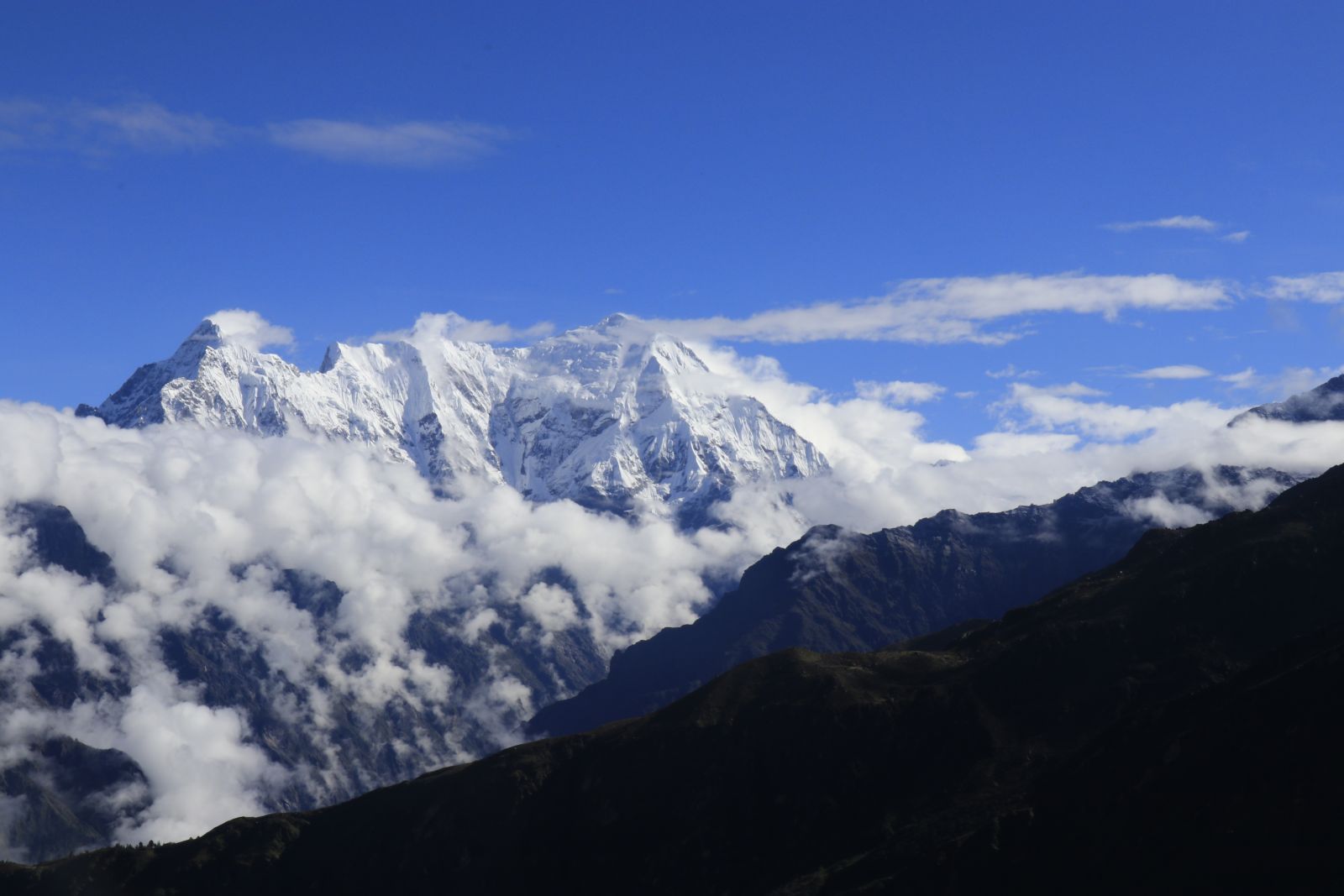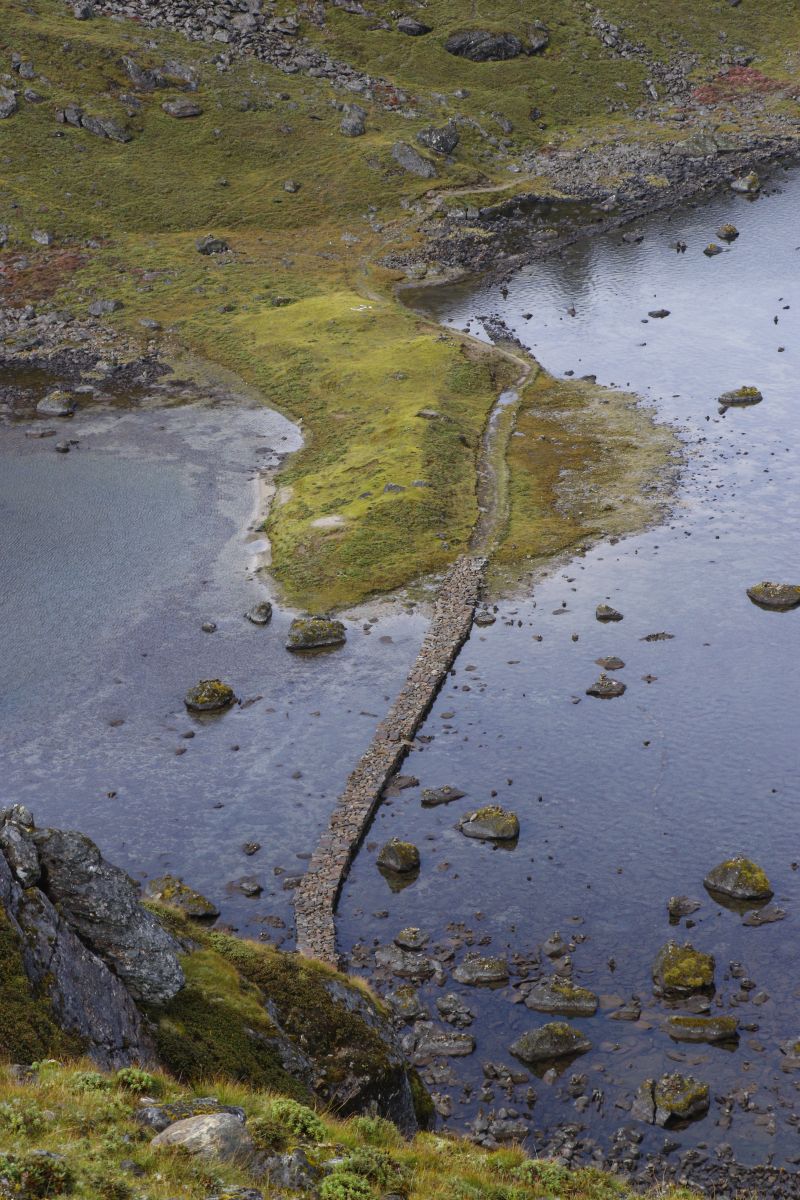Trekking in Langtang: To Conquer the Unconquered
As much as it is a journey that tests your physical boundaries, it is also about self-revelation that brings your philosophical side to the fore.
Trekking the Langtang hills was all about gaining new insights and discovering new truths for a young Chinese girl during her exciting exploration of Nepal.
It was day-six of our trekking—I had been walking inside the Langtang mountains of nowhere for six hours, tired and hungry. Narrow, muddy paths meandered across the endless mountains and mist; the valley was so quiet, as if nobody has ever been here. I had no idea what was waiting in front of me. Maybe another meal of curry potatoes that we had enough of every day since we were on the mountain … if I could survive till we arrived … my mind started wandering …
Ever since the innovation of aircrafts and automobiles, urban inhabitants seem to have the illusion that they can conquer lofty mountains and dense jungle by modern transport. Part of it may be true. Yet, as a Chinese living in a metropolis of southern China, it was not until that wrapping up of an eight-day trek in Langtang National Park—the first Himalayan national park in Nepal—setting off from Syabrubesi, reaching the highest spot of 4,610 m, and visiting the sacred lake Gosaikunda, that I developed a strong dissenting opinion.
With an area of 1,710 square kilometers, Langtang National Park is a famous Himalayan trekking area, nearest to Kathmandu than other similar parks, offering abundant natural sceneries, from snow summits to lush temperate river valleys, and an ancient jungle where lives the national treasure of Nepal, the red panda.
In a group of six journalism students and two teachers, we trekked an area ranging in altitude from 1,340 m to 4, 610 m, while talking and interviewing local ethnic people; thus differentiating ourselves from the usual regular tourists, and witnessing incredible culture and landscapes in the park.
Nature sees us all as equal; she didn’t disguise a single mystery of the beautiful snow-covered mountains, nor a bunch of leeches on the muddy road. I can still remember that scene—witnessing, for the first time, two leeches wriggling and sticking on my right foot, with many more creeping up my boots. I screamed and begged one guide to take me out of this place as soon as possible. But, that’s another story.
Before the formal trek, we first took a quick drive to the Rasuwagadhi-Gyrong border to have a look at the current scenario, after China and Nepal signed the Belt and Road Initiative in May. Driving from Kathmandu on the muddiest narrow road that I have ever seen in my life, to the land crossing, which was being planned to be part of the Great Himalayan Trail linking China’s Gyrong to Rasuwagadhi, and all along to Kathmandu, we saw a lot of new developments. Hydropower projects under construction to supply local electricity (a lot of villages there are still using only solar power), and international tourists crossing the border (something that was not allowed before).
On the first day of the trek, I felt uneasy; setting off from Syabrubesi to Thulo Syabru, and climbing up to an altitude of approximately 1,000 m in five hours. Although everybody seemed to be happy to step ‘out of the office’ and into the woods, by the time we arrived at Thulo Syabru, we were all starving and couldn’t help buying a ‘luxury’ drink—Coca Cola—as self-compensation, which cost 250 rupees for one at the first house we saw in this non-vehicular-accessed village.
Although it has been two years, the scars of the great April 25, 2015, earthquake can still be seen in Thulo Syabru, and all the way we went while trekking. In Thulo Syabru, some houses were still being reconstructed. Some people were still living in dilapidated buildings or temporary houses. Not only were the locals’ houses destroyed, their financial activities were also greatly reduced—fewer tourists visit here now. Without vehicular road, this village, and all the villages we were going to visit up in the mountains, depend on tourists’ expenses.
Accommodations were clean and comfortable, with fantastic views of mountains, lakes, and waterfalls. All of these houses were equipped with hot shower, electricity (sometimes it was limited, but fair enough), and plenty of basic Nepali food. I don’t remember how many daal bhaats and chapatis we had during this trek, but trust me, every day, different attractive scenery will feed you first before you get bored with the food.
It is commonly believed that the view of Gosaikunda (4,380 m) is most stunning during this trek; however, I saw a view more amazing. That of Langtang Lirung, the highest and spectacular snow peak of Langtang, from a place called Lauribina (3,950 m). The night was cold and it rained heavily; I curled up in a sleeping bag near an extinguished stove, half awake and half asleep, thinking about what we were gonna do if we could not set off tomorrow, or if we encountered a landslide. Then, the next morning, a panoramic mountain view under a clear azure sky lay before my eyes.
Luck smiled on our expedition again on the night we spent in Gosaikunda. It snowed! The hilltop beneath Gosaikunda and Bhairavkunda was powdered with snow, while the foot of the hill revealed the actual season by remaining green. “Every few steps gives a different view,” said my friend Binod. Since the snow was thin, reaching the highest point, Suryakunda (4,610 m), you can still see black rocks and grass below snowflakes, making it a colorful masterpiece.
Lodges in remote mountains not only provide an opportunity to stay away from social media and secular anxiety, but also to talk to interesting strangers. There were people from all walks of life, students, former military officers, hotel owners, etc. At Gosaikunda, we even met a three-legged dog, who sat himself by the stove; he had followed a group of Israeli trekkers from Dhunche, which is at least 50 km away. Trekking here on foot was the common ground that brought us together; facing similar difficulties and experiences made conversations happen naturally.
It makes me think of the Tower of Babel, the myth of a united humanity falling apart due to different languages. Human beings are always trying to explore, or conquer the unknown via technology and competition. We assume that nature is incompatible with modernization and human aspiration, but trekking tells me a different story. There is always some unknown that cannot be conquered, for example, nature itself, and the most efficient way to deal with that is to respect and to communicate.














